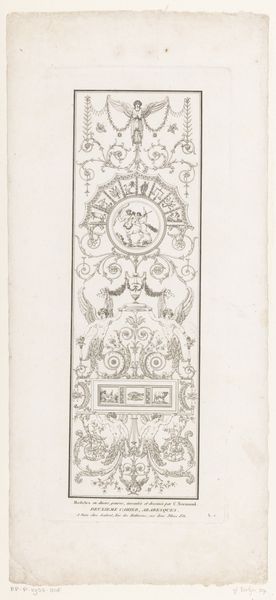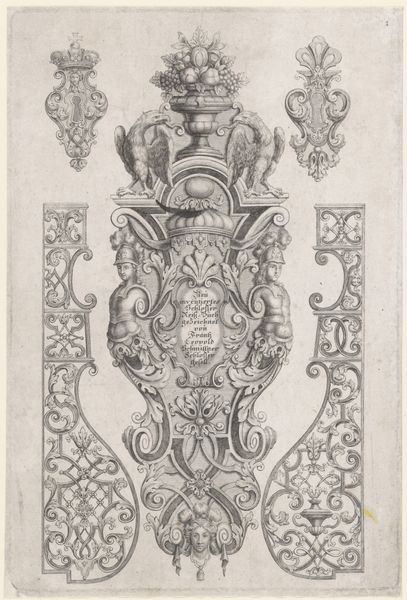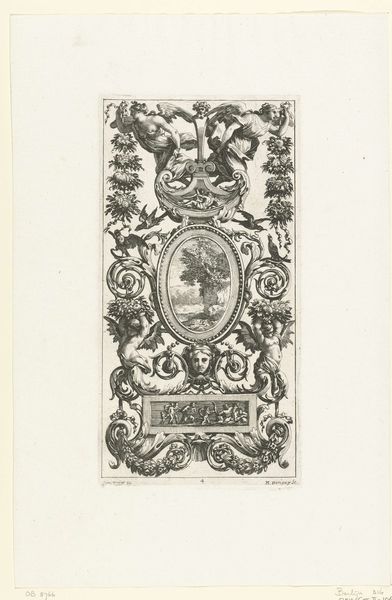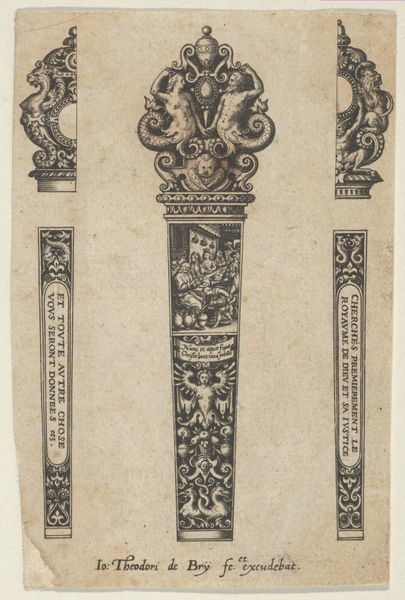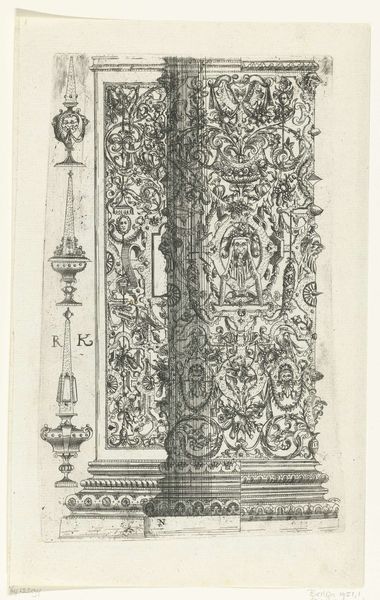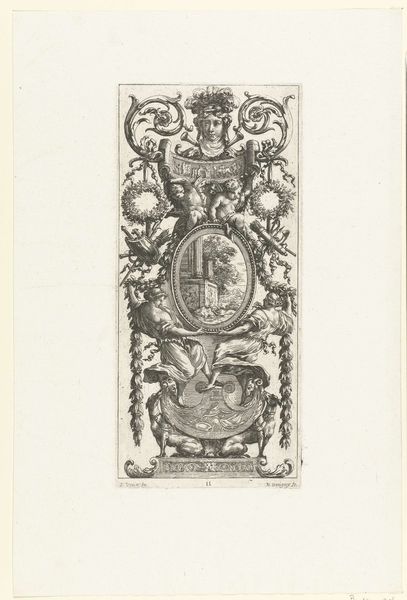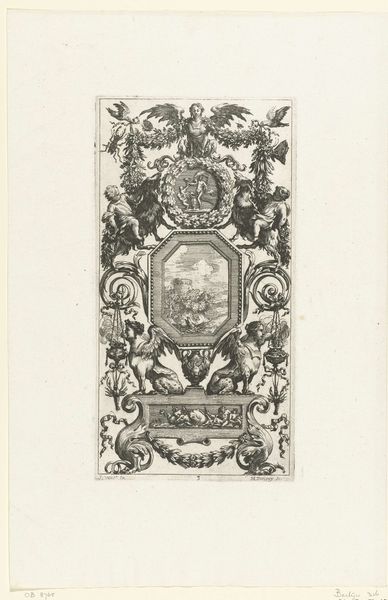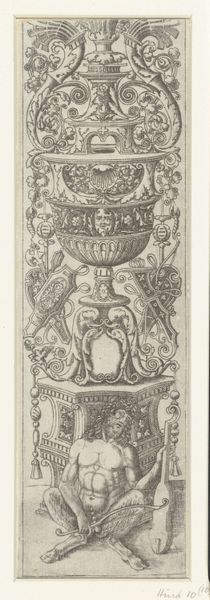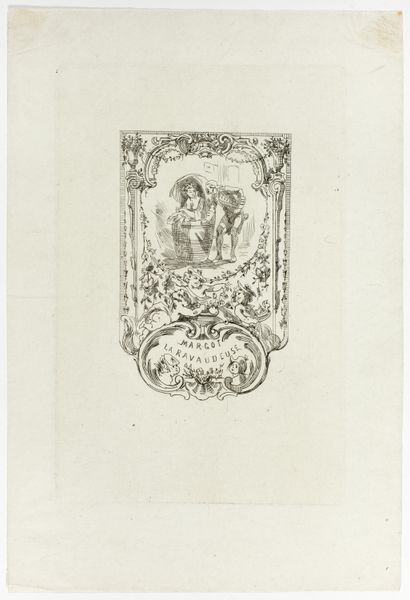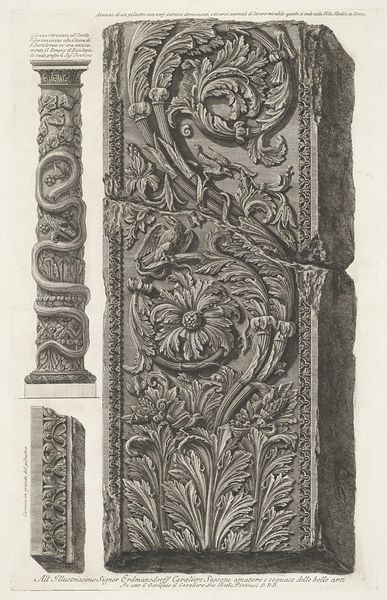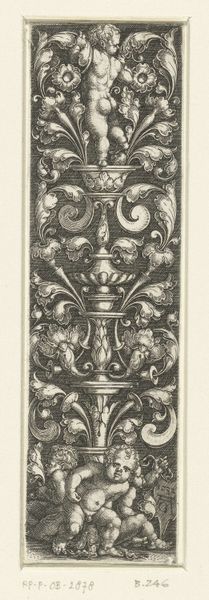
drawing, print, ink, engraving
#
drawing
#
light pencil work
#
pen drawing
# print
#
pen illustration
#
pen sketch
#
old engraving style
#
figuration
#
ink line art
#
11_renaissance
#
ink
#
pen-ink sketch
#
thin linework
#
line
#
pen work
#
sketchbook drawing
#
italian-renaissance
#
engraving
Dimensions: height 523 mm, width 83 mm
Copyright: Rijks Museum: Open Domain
Editor: We’re looking at "Kandelaber met triton en viool" (Candelabra with Triton and Violin) made between 1505 and 1515 by Zoan Andrea. It’s an engraving, and what strikes me is the incredible detail achieved with line work. What's your read on it? Curator: Let's consider the production of this piece. It's not simply an image, but an object made with tools and labor. How might the fact that it is an engraving – a repeatable image intended for dissemination – shape its meaning? The materials—ink, paper, the metal plate from which it's printed—are not neutral. They speak to systems of craft, trade, and patronage. Editor: I see your point! It’s easy to get lost in the imagery itself – the triton, the musical instruments. So you're suggesting it’s important to also think about the economic system that makes this kind of print possible? Curator: Exactly! Look at the meticulous execution of line and the way it simulates depth. This speaks to skilled craftsmanship, likely within a workshop setting, with hierarchies of labor at play. What kind of access would people have had to images like this? Would this impact its artistic status, compared to unique painted artworks for the wealthy? Editor: So, it's both art and commodity? That definitely shifts how I see it. What do you think someone might use it for? As inspiration or as a sourcebook for other artisans perhaps? Curator: Precisely. These prints served as models, readily consumed and adapted across various crafts. Its materiality and production become part of the image's overall impact. Editor: This has given me a completely new angle on understanding art of this era; thinking about the means of production is fascinating. Curator: Indeed! By looking at the physical properties and social context, we avoid the traditional art history trap of simply focusing on authorship or aesthetic beauty.
Comments
No comments
Be the first to comment and join the conversation on the ultimate creative platform.

